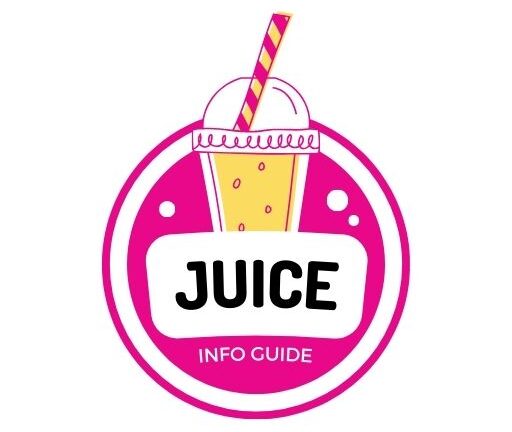Ever wondered why it’s called lemonade and not lemon juice? It’s a question that might pucker your lips in curiosity! After all, lemonade’s main ingredient is lemon juice. But there’s a delightful reason behind the name, deeply rooted in history and how we transform tart lemons into a sweet, refreshing beverage. Let’s explore the juicy details of this linguistic twist.
Lemon Juice vs. Lemonade: What’s the Real Difference?
To understand why we call it lemonade, we first need to clarify the difference between lemon juice and lemonade.
- Lemon juice is simply what you squeeze directly from a lemon. It’s the pure, unadulterated liquid, known for its intense sourness. You wouldn’t typically drink it straight!
- Lemonade, on the other hand, is a drink. It’s traditionally a homemade concoction of lemon juice, water, and a sweetener like sugar, simple syrup, maple syrup, or honey. This combination mellows out the lemon’s acidity, creating a balanced and enjoyable beverage.
Essentially, lemonade is what happens when you take the intensely sour lemon juice and transform it into something palatable and refreshing by adding water and sweetener.
The “Ade” Phenomenon: A Historical Twist
The term “lemonade” actually follows a historical naming convention for fruit-based drinks. The suffix “-ade” has long been used to denote a beverage made with fruit juice, water, and sugar. Think of other examples like orangeade!
From Sour to Sweet: The Art of Transformation
The key difference lies in the transformation process. Lemon juice, in its raw form, is far too acidic and intense for most people to enjoy on its own. It needs to be diluted and sweetened to become the delightful drink we know as lemonade. The addition of water and sugar isn’t just about taste; it’s about creating an entirely new beverage experience.
Why Not Just Call It “Sweetened Lemon Juice”?
While “sweetened lemon juice” would technically be accurate, it doesn’t quite capture the essence of lemonade. The name “lemonade” implies a distinct beverage with its own unique characteristics, separate from just being modified lemon juice. It’s a drink with a history, a culture, and a refreshing identity all its own.
Lemonade Around the World: Variations and Interpretations
It’s also interesting to note that the definition of lemonade can vary across different cultures and regions.
In the US, lemonade typically refers to the homemade or commercially produced drink made with lemon juice, water, and a sweetener. It often contains a lot of sugar and can even come in powdered form.
Making Your Own Perfect Lemonade: A Balancing Act
Now that you know the story behind the name, let’s talk about making the perfect lemonade at home! The key is finding the right balance between tartness and sweetness. Here’s a basic recipe to get you started, which you can easily modify to suit your taste:
Ingredients (for approximately 1 liter):
- 1 cup fresh lemon juice (from about 6-8 lemons)
- 1 cup sugar (or sweetener of your choice)
- 4 cups water
Instructions:
- Make a simple syrup: In a saucepan, combine the sugar and 1 cup of water. Heat over medium heat, stirring until the sugar is completely dissolved. Remove from heat and let cool. For a sugar-free lemonade, you can skip this step.
- Combine ingredients: In a pitcher, combine the cooled simple syrup (or sweetener), lemon juice, and the remaining 3 cups of water. Stir well.
- Adjust to taste: Taste the lemonade and adjust the sweetness or tartness as needed. Add more sugar or sweetener if it’s too tart, or more lemon juice if it’s too sweet.
- Chill and serve: Refrigerate the lemonade for at least 30 minutes to allow the flavors to meld. Serve chilled, with ice and lemon slices for garnish.
Beyond the Basic: Lemonade Variations to Explore
Once you’ve mastered the basic lemonade recipe, the fun begins! There are endless variations you can try to create your own signature lemonade. Here are a few ideas to get your creative juices flowing:
- Sparkling Lemonade: Substitute sparkling water or club soda for the still water to add a fizzy twist.
- Herbal Lemonade: Infuse the simple syrup with fresh herbs like mint, basil, or rosemary for a fragrant and refreshing variation.
- Fruity Lemonade: Add other fruit juices like strawberry, raspberry, or watermelon for a colorful and flavorful twist.
- Spiced Lemonade: Add a pinch of ginger, cardamom, or cinnamon to the simple syrup for a warm and aromatic variation.
The Final Squeeze
So, the next time you sip on a glass of refreshing lemonade, remember the story behind the name. It’s more than just lemon juice; it’s a carefully crafted beverage that transforms the sourness of lemons into a sweet and delightful experience. Now that you know why it’s called lemonade and not lemon juice, go forth and create your own perfect batch!
